How to check battery performance
Nowadays, no matter what equipment you take, you will almost certainly come across the need to install AA or pinky batteries. They are as similar to each other as two peas in a pod - the fingers on the hands are more different than they are. But their performance characteristics, and even the price, may differ greatly.
In order not to buy a “pig in a poke” and accidentally stumble upon a product with a limited shelf life, or even even expired, you need to be able to check their quality. A similar skill will help to carry out an audit of household batteries. After all, it’s high time to send many of them to scrap, while others should be distributed among devices that are not so demanding of power.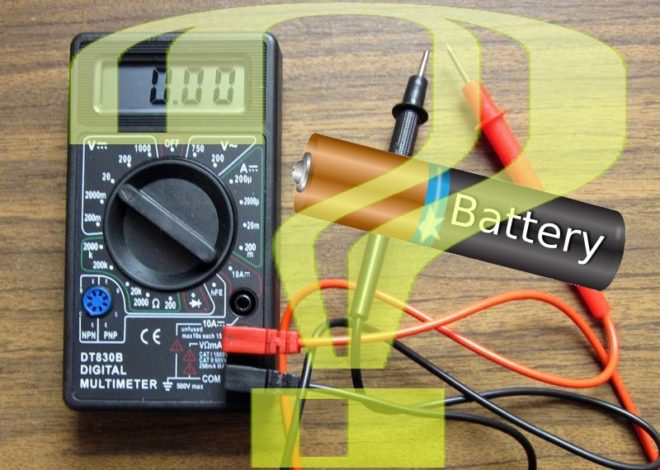
The content of the article
What characteristics determine the performance of a battery?
People have long and consistently dubbed everything that provides electricity for electronic gadgets as batteries.
As a rule, they all have a cylindrical shape with markings AA or AAA, and are also found in the form of tablets.
Some of them can be recharged repeatedly, this can be understood by the Rechargeable inscription - these are batteries, while others are used only once.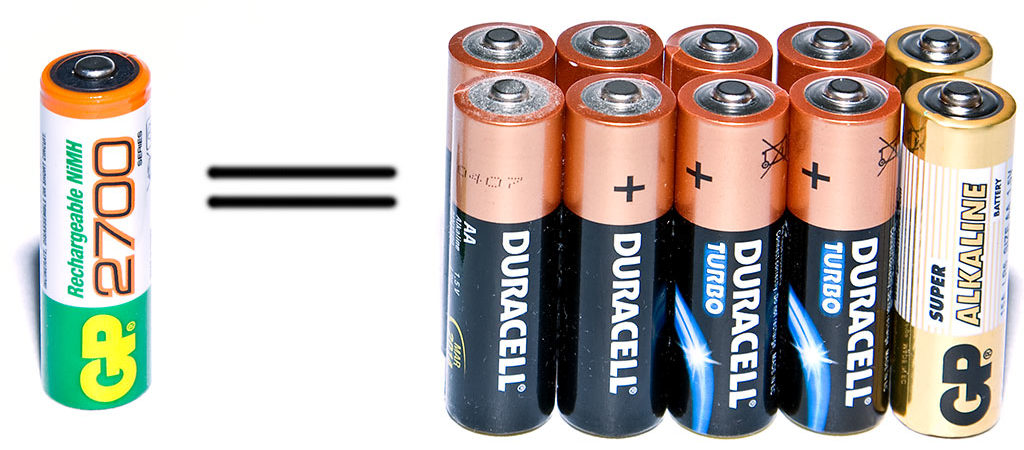
The packaging and cases of all other batteries clearly indicate that they are disposable, which means they cannot be charged. This is an important point, and you should understand that trying to install them in a charger is very dangerous; they can not only damage the equipment, but also cause a fire or explosion.
The main indicator of battery performance is the power it can deliver to the device. There is voltage at the contacts of the battery and if it is inserted into the device, the contacts will close and an electric current will occur.
Naturally, the current cannot be eternal, but will only exist for as long as the energy reserve inside the battery is not depleted. This current reserve is called the battery capacity.
If you take a car battery, then its current reserve is sixty ampere-hours. In other words, it can run for sixty hours if the load is only one amp, or it will run for an hour with a load of sixty amps.
All this is equally characteristic of batteries. They just have much less power. Accordingly, their capacity is determined in milliamp-hours.
Reference. The main indicator of the operating condition of a battery is capacity. It is this that determines how long it will function.
During use, the capacity continuously decreases, and how quickly this decrease occurs directly depends on the load that is connected.
It should be remembered: the more powerful the device, the more load it gives, and therefore, the power source will discharge faster. Therefore, you need to buy batteries specifically for a specific device.
Ways to check the battery
Sometimes it happens that you need to quickly check the functionality of the battery.This often happens when it’s time to conduct an audit of household deposits and you are not sure which battery is new and which has been lying around for several years. But what about home bins? Often, even in a store, there is a risk of purchasing stale goods.
Method one: for the most desperate
You need to take two batteries and connect them together. In this case, the positive end of one of them must be connected to the negative end of the other. After this, you need to wet your finger and press it to the battery where there is a negative pole, and touch the positive pole with your tongue. If you feel a tingling sensation on your tongue, then everything is working. But you don't need to do this very often.
Method two: increase your vigilance
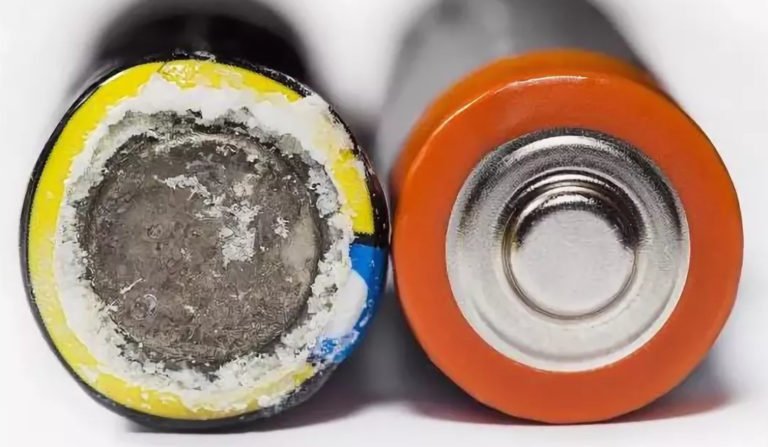
Definitely, it will never work again.
Method three: working at one hundred percent
To check the battery for functionality, you will need a tester. Professionals often call it a multimeter. This device allows you to check not only the voltage, but also the ampere value. And a lot of other useful things. Here the probability of determination accuracy will be one hundred percent.
Measurements should be taken during a short circuit. Device readings below 0.3 ampere indicate that the battery is unusable. If the values are in the range from 0.3 to 0.7, then the element will still work in devices that do not require high voltage. If the device says that the battery has more than 0.7 amperes, this is a very good indicator. 
Pen-type batteries (those marked AA) can also be checked by measuring the voltage. For workers, this value should be in the range from 1.3 to 1.5 volts.
Method four: torture the battery with electrical equipment
- small motor;
- a flashlight bulb of one and a half or three volts.
If the motor works quickly and successfully, for at least two minutes, then everything is fine with the battery. If a small engine, having started to work successfully, gradually slows down, it is better not to use such a battery.
The light bulb test follows a similar procedure. If it shines brightly and for a long time, you can buy a battery. Prolonged bright burning indicates good operation. Well, if the light is dim, then, most likely, this battery will soon come to an end.
Method five: checking the stability of the battery
The experiment is, of course, controversial, but they say it seems to be effective:
- We take the battery and raise it above a table or other horizontally flat plane.
- You need to raise it about three centimeters.
- Let go so that it falls vertically down.
If the battery falls when it comes into contact with a surface, this indicates that it is unusable. Well, if it resists, then you can use it. The main thing here is that your hands don’t shake.
As mentioned, this is not a particularly reliable method - too many factors influence the success of the fall. Even a perfectly working element may well fall.
This method can only test alkaline batteries. The fact is that they contain a gel inside, or rather the electrolyte is in a gel-like state. This state somewhat dampens the inertia of the fall and does not allow the element to bounce off the plane of the table. If the battery has long been dead, then the electrolyte has turned into a solid state. That is why such a battery jumps much more energetically.
If your favorite TV remote suddenly stops functioning, forcing you to get up in order to switch to the next advertisement, do not be lazy to take a tester and check the batteries. They have a tendency to sit unevenly. Most likely, one of them will have more voltage than the other. The one with the lower indicator is scrapped, and put a new one in its place.
The author doesn’t understand at all what he’s writing about, it’s complete nonsense that misleads people (I heard a ringing and doesn’t know where it is) you can check the battery with any tester or multimeter by setting the switch to the current measurement mode of 1.5 amperes, a good new battery will give a reading of the voltage drop on the internal The shunt of the device is somewhere around 1.4 amperes and the falling readings of the device will tell you that the battery is unusable, and the advice to the author is to learn how to use the device and then just publish it.
The new battery shows 1.6V
How is it scrapped…………….
The author sniffed something... I remembered a joke.How to distinguish a hare from a hare? You need to pick it up by the ears and throw it. If he ran, it means HE, if he ran, it means SHE.
You cannot test in short-circuit current measurement mode - after this, the service life of even a new battery is sharply reduced. You need to load the resistor and measure the voltage. Typical values: the voltage value across the 3.9 Ohm resistor must be at least 0.9 V.
They correctly write that it is not the voltage that is important, but the amperage.
Yes, in the distant past they checked the battery on the tongue. There were no instruments (voltmeters)!
The author is essentially right, but not entirely. A working AA battery produces a current of 7-10 Amps on the multimeter. and AAA 6-8 Amperes on average. Batteries with a current of 0.7 A stop working even on TV remote controls, etc.
I constantly use this method (a device for measuring current and briefly touch directly the contacts of AA and AAA batteries. Well, the batteries of these Models, respectively.
And regarding the tongue, when I was a kid, I constantly checked Krona batteries (9V) and KBSL flat batteries (4.5V) with my tongue. The first one was good, but the second one was sour.
In terms of voltage, I check CR type batteries (for watches, computers, etc.) for a voltage of 3V
Using a multimeter, they check 1.5 volt batteries in current mode and the device shows 3A or a little more and holds it for a couple of seconds, no need to hold it further. there’s no point……the battery means it’s good…..what’s there to talk about……. what kind of 7-10A or 6-8A are you talking about.....there’s no need to fool people’s minds.....the internal resistance of the device and the power source will not allow the current to accelerate above 7-1o A.....

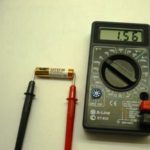


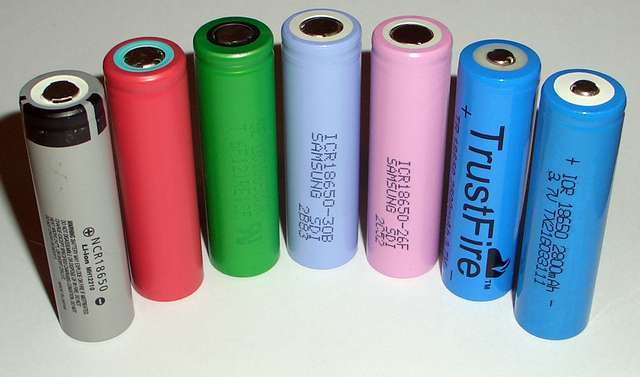
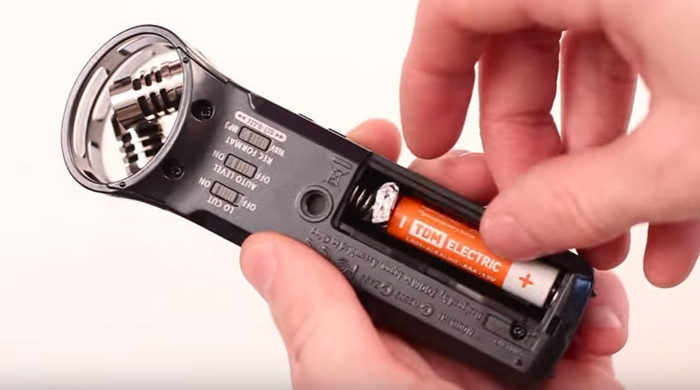
what nonsense, try with your tongue, the author is being weird. if you write how to check with a tester. just check so that you know that if the battery produces a current of 0.7 A, then it is no longer suitable for a pressure measuring device... and write that the new battery produces a current of up to 3A... this is normal, and even this current immediately doesn’t subside......well, of course not with the tongue.....the children will laugh at you...